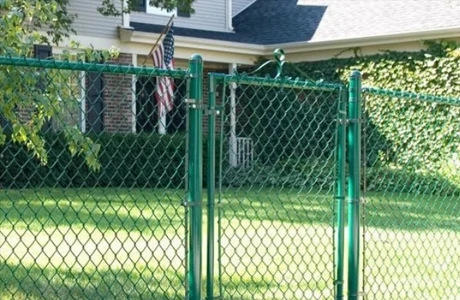Durable Stainless Steel Nails for Various Construction and Crafting Projects
The Versatility and Strength of Stainless Steel Nails
Stainless steel nails have become a staple in various industries, ranging from construction to woodworking, and even marine applications. Known for their remarkable durability and resistance to corrosion, stainless steel nails offer a plethora of benefits that make them preferable over their traditional counterparts. This article aims to delve into the characteristics, advantages, applications, and considerations of using stainless steel nails.
Characteristics of Stainless Steel Nails
Stainless steel is an alloy that primarily contains chromium, which gives it its corrosion-resistant properties. Stainless steel nails are made from a variety of grades, with the most common being 304 and 316. The 304 grade is suitable for general-purpose use, while the 316 grade is often utilized in more extreme environments, such as near seawater, due to its enhanced resistance to pitting and corrosion.
These nails come in various sizes and styles, including common, finishing, and ring shank nails, allowing them to cater to a wide array of applications. Their smooth surface allows for easy driving into materials, and they are often designed to minimize splitting, making them ideal for use in delicate projects.
Advantages of Using Stainless Steel Nails
One of the primary advantages of stainless steel nails is their outstanding corrosion resistance. Unlike traditional steel nails that can rust when exposed to moisture, stainless steel nails retain their appearance and structural integrity, even in high humidity or wet conditions. This feature makes them highly valuable in coastal regions or areas prone to extreme weather.
Another notable benefit is their strength and durability. Stainless steel nails can withstand significant loads and stresses without bending or breaking, ensuring the longevity of the structures they secure. This durability not only enhances the safety of constructions but also reduces the frequency of repairs and replacements, ultimately leading to cost savings over time.
Additionally, stainless steel nails are eco-friendly. They are often made from recycled materials and are fully recyclable at the end of their life cycle. This commitment to sustainability appeals to environmentally-conscious builders and homeowners alike.
Applications of Stainless Steel Nails
stainless steel nail

Stainless steel nails are used in a variety of applications. In construction, they are commonly utilized for framing, roofing, and siding. Their ability to resist rust makes them ideal for securing materials in moist or outdoor environments.
In woodworking, stainless steel finish nails are often chosen for their aesthetic appeal. These nails can be used to create a polished look without being overly conspicuous, as the stainless-steel finish blends well with most wood tones.
Marine applications also heavily rely on stainless steel nails. Boats, docks, and other marine structures benefit significantly from the corrosion resistance of stainless steel, which ensures safety and durability in saltwater environments.
Moreover, because of their strength, stainless steel nails are increasingly being utilized in industries such as furniture production and cabinetry, where precision and longevity are paramount.
Considerations When Using Stainless Steel Nails
While stainless steel nails offer numerous benefits, there are some considerations to keep in mind. First, they tend to be more expensive than traditional steel nails. However, many professionals argue that the long-term savings and durability justify the higher upfront cost.
Secondly, due to their hardness, stainless steel nails can be more challenging to drive into harder materials. Using the correct tools, such as a hammer or nail gun specifically designed for metallic fasteners, can alleviate this issue.
Lastly, it is essential to select the appropriate grade of stainless steel for your specific application. For instance, if you're working in a marine environment, the 316 grade is often the better choice due to its superior corrosion resistance compared to 304.
Conclusion
Stainless steel nails embody a perfect blend of strength, durability, and resistance to corrosion, making them an essential component in various construction, woodworking, and marine applications. While there are considerations regarding cost and usability, the benefits they offer, such as eco-friendliness and reduced maintenance needs, outweigh these factors for many professionals and DIY enthusiasts alike. As we continue to build environmentally conscious structures, the role of stainless steel nails in our projects is expected to grow, reinforcing their status as a reliable and versatile fastener.
-
Space-Saving Chain Fence Hacks Vertical Gardening with Cyclone MeshNewsJul.16,2025
-
Innovations in Iron Nail Wire Production for Modern ConstructionNewsJul.16,2025
-
Creative Uses of Wire Netting Fence in Modern Landscape DesignNewsJul.16,2025
-
Barbed Wire Fence Innovations in Anti-Climb TechnologyNewsJul.16,2025
-
Architectural Uses of Umbrella Nails for Aesthetic Roof DesignsNewsJul.16,2025
-
Architectural Uses of Razor Barbed Wire in Secure Urban DesignNewsJul.16,2025




